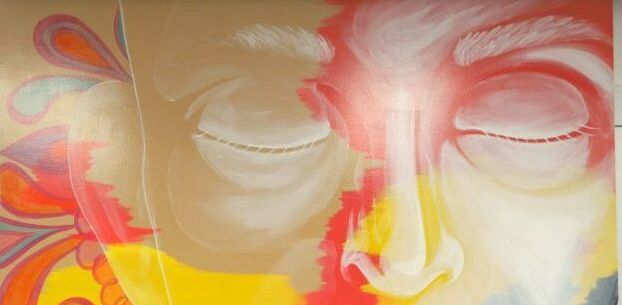Creating an enriched environment is one of the most effective ways to stimulate and enhance brain function. When we talk about enriched spaces, we're referring to environments filled with stimulating and novel elements that engage our senses and encourage our minds to explore and create. Art plays a crucial role in these spaces, offering more than just aesthetic pleasure—it also provides substantial cognitive and emotional benefits.
Unleashing Your Brain's Potential: The Benefits of Enriched Spaces with Art
Research in neuroscience has shown that enriched environments can significantly impact brain development and function. These environments, often characterized by variety and complexity, promote neuroplasticity—the brain's ability to reorganize itself by forming new neural connections. This is crucial for learning, memory, and overall cognitive health.
How Art Enriches SpacesStimulates Creativity and Innovation:
Art encourages us to think outside the box, challenge norms, and explore new ideas. By exposing our brains to diverse artistic expressions, we foster creative thinking and problem-solving skills.
- Enhances Emotional Well-being: Engaging with art can evoke powerful emotions, helping us process feelings and improve our mood. This emotional engagement can reduce stress, anxiety, and depression, promoting overall mental health.
- Improves Cognitive Functions: Viewing and creating art activates various parts of the brain, enhancing functions such as attention, memory, and spatial reasoning. These activities help keep our minds sharp and agile.
- Boosts Neuroplasticity: Regular exposure to art and other stimulating elements in an enriched environment encourages the brain to form new connections. This adaptability is vital for learning new skills and recovering from neurological challenges.
Practical Ways to Enrich Your Space with Art
- Diverse Art Collections: Incorporate a variety of art forms—paintings, sculptures, photographs, and mixed media. Each form engages the brain differently, offering a richer sensory experience.
- Interactive Art: Include art pieces that invite interaction, such as installations or kinetic sculptures. These not only captivate visually but also encourage physical engagement, further stimulating the brain.
- Changing Displays: Regularly update your art displays to keep the environment dynamic and engaging. New visual stimuli prevent monotony and continuously challenge the brain.
- Personal Creativity: Encourage personal art creation. Set up a space for painting, drawing, or crafting. Engaging in the creative process can be incredibly therapeutic and mentally stimulating.
- Art and Nature: Combine art with elements of nature, such as botanical illustrations or sculptures made from natural materials. This fusion can amplify the calming and restorative effects on the brain.
Conclusion
Incorporating art into your environment is more than just a way to beautify a space—it's a powerful tool for enhancing cognitive and emotional well-being. By creating enriched spaces filled with diverse and dynamic art, you can unlock the full potential of your brain, fostering creativity, reducing stress, and boosting overall mental health. Whether through viewing, interacting with, or creating art, make it an integral part of your environment and watch as your mind flourishes.
Transform your space, transform your mind—embrace the art of living with enriched environments.
Please share your thoughts and experiences on how art has enriched your space and mind on or Facebook page @HeartspaceArt
This blog post was inspired by the book Your Brain on Art: How the Arts Transform Us by Susan Magsamen & Ivy Ross
Check out these other blogs about art and health.


Heartspace Art's art services are currently focused in NE Florida with our primary service areas in Jacksonville, Jacksonville Beach, St. Augustine, Daytona, & Gainesville.



